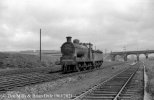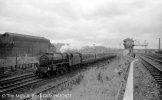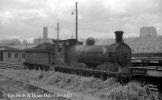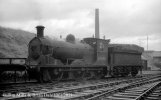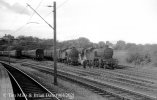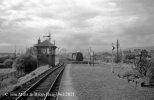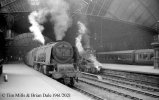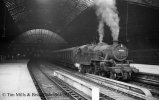oldravendale
Western Thunderer
I agree, Jan. A cracking photo. I remember being regularly deafened at Kings X with safety valves blowing off, despite the plethora of notices asking crews to keep the noise down!
For today a sudden and unexpected diversion. Hidden in the Scottish photos are these. Frustratingly the film number attributed to them suggests they are probably also 1961 although it doesn't appear in Tim's notes. If in sequence it would suggest September 1961 but that's not possible for reasons which will become obvious. I have no details for location either so suggestions will be appreciated.
Some nice portraits, although all from the same angle, of King Arthur 30457 Sir Bedivere. As the loco was withdrawn from Nine Elms in May 1961 (SLS) it can't quite be contemporary with the Scottish photos. It was shedded at Nine Elms and this is Waterloo Station. It was scrapped in July 1961 although neither the SLS, BR Database or Rail UK know where. As this action was so rapid, though, and based on knowledge of how the majority of N15s met their end I'd hazard a guess that it was at Eastleigh. (Confirmed by WHTS).
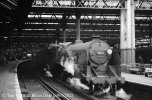
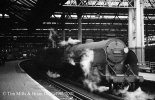
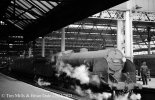
More ordinary fare here, but still on the Southern. BR Standard Class 4 2-6-4T 80018 alongside an EMU. Is this still Waterloo? The number of the EMU is just not decipherable, but the loco was probably based at Tunbridge Wells West, assuming this is 1961. It ended up at Eastleigh from where it was withdrawn in April 1965 after a period in store. (SLS). It went to Cohens at Morriston where it was scrapped during August 1965. (BR Database).
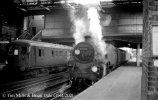
Brian
For today a sudden and unexpected diversion. Hidden in the Scottish photos are these. Frustratingly the film number attributed to them suggests they are probably also 1961 although it doesn't appear in Tim's notes. If in sequence it would suggest September 1961 but that's not possible for reasons which will become obvious. I have no details for location either so suggestions will be appreciated.
Some nice portraits, although all from the same angle, of King Arthur 30457 Sir Bedivere. As the loco was withdrawn from Nine Elms in May 1961 (SLS) it can't quite be contemporary with the Scottish photos. It was shedded at Nine Elms and this is Waterloo Station. It was scrapped in July 1961 although neither the SLS, BR Database or Rail UK know where. As this action was so rapid, though, and based on knowledge of how the majority of N15s met their end I'd hazard a guess that it was at Eastleigh. (Confirmed by WHTS).



More ordinary fare here, but still on the Southern. BR Standard Class 4 2-6-4T 80018 alongside an EMU. Is this still Waterloo? The number of the EMU is just not decipherable, but the loco was probably based at Tunbridge Wells West, assuming this is 1961. It ended up at Eastleigh from where it was withdrawn in April 1965 after a period in store. (SLS). It went to Cohens at Morriston where it was scrapped during August 1965. (BR Database).

Brian
Last edited:


